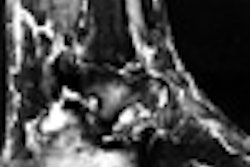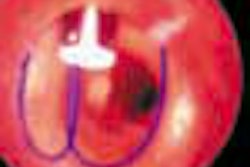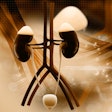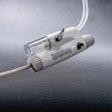Mediastinoscopy has been around a lot longer than TBNA, so it appears in more studies. One study compared the two techniques and found similar results, Mehta said.
Mediastinoscopy's sensitivity was 87%, while TBNA's was 89%. Both had specificity and positive predictive value of 100%. However, the negative predictive value of mediastinoscopy was 93%, while TBNA's was only 60%.
"The reason for this increased sensitivity is that TBNA can also sample otherwise inaccessible areas of the mediastinum, such as the posterior mediastinum and aortopulmonary window. It would be difficult to sample these with a mediastinoscope. So if TBNA is negative, those patients must undergo mediastinoscopy."
A 1993 study of 55 patients with bronchogenic carcinoma pegged TBNA's overall yield at 89% -- as good as mediastinoscopy. The equality was due largely to TBNA's ability to sample areas of the mediastinum that are inaccessible to mediastinoscopy, Mehta said (American Review of Respiratory Disease, May 1993, Vol.147:5, pp.1251-1258).
In a study of 279 patients with non-small cell lung carcinomas, TBNA proved unresectability in 14% of the patients, and eliminated the need for further testing in 29%, Mehta said (AJRCCM, February 2000, Vol: 161:2, Pt 1, pp.601-607).
TBNA is available at more centers than mediastinoscopy because the latter requires a thoracic surgeon experienced in the technique, he said. Pathology is complex; if mediastinoscopy is to be done properly, each of six stations in the mediastinum must be sampled in separate jars. After mediastinoscopy you need a good pathologist, but not significant lab support, he said. With TBNA you need a good cytopathologist.
In comparison with TBNA's low rate of mostly minor complications, about 0.1%, mediastinoscopy is an invasive procedure with a higher rate of complications (about 2.5%) that are usually more serious. Complications from mediastinoscopy include damage to the nephretic nerve, tracheobronchial injury, esophageal perforation, and others, according to Mehta.
"When you suspect that patients have benign disease involving the mediastinum, TBNA is not as good, especially if you have lymphoma or other benign conditions. It does fairly decent diagnostic evaluations of sarcoidosis and mycobacterial infection. However, mediastinoscopy is contraindicated in patients with cervical arthritis, cutaneous tracheostomy, and [in] small-size patients."
By far the most important difference is cost, he said. One analysis estimated savings of $1.6 million to nearly $3 million per 1,000 patients who underwent TBNA first, followed by mediastinoscopy when necessary -- vs. patients who began with mediastinoscopy. The estimates ranged widely based on the skill levels of those performing the exams, Mehta said.
"There are practical issues, too," he said. "Hospitalization is required [with mediastinoscopy] and the cost is significantly higher. Most of these patients undergo flexible bronchoscopy prior to mediastinoscopy, so why not do TBNA? And if [mediastinoscopy] fails, what are you going to do? More surgery. If TBNA fails, you still have mediastinoscopy."
Patients suspected of having unresectable lung cancer on the basis of x-rays should undergo flexible bronchoscopy with TBNA for diagnosis and staging, Mehta said. Mediastinoscopy should be performed if those procedures remain nondiagnostic.
"The fringe benefits of CT scanning can offset its lower sensitivity and specificity, and make it an integral part of lung cancer staging. However, despite higher sensitivity and specificity, PET scanning supplants neither CT nor mediastinoscopy. [PET's] expense and availability are prohibitive. An analytic approach is necessary," Mehta concluded.
By Eric BarnesAuntMinnie.com staff writer
November 3, 2000
Let AuntMinnie.com know what you think about this story.
Copyright © 2000 AuntMinnie.com


















